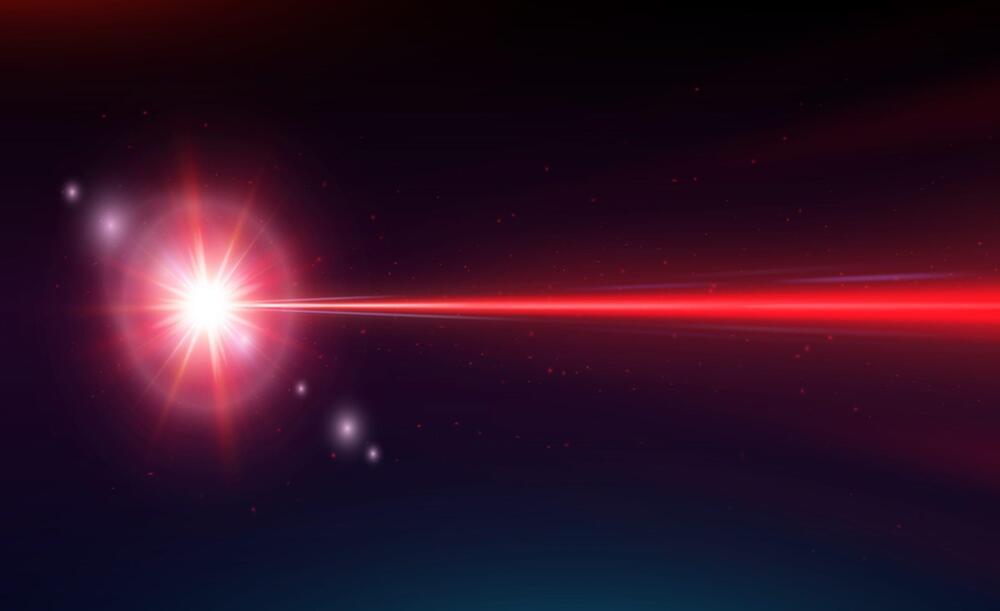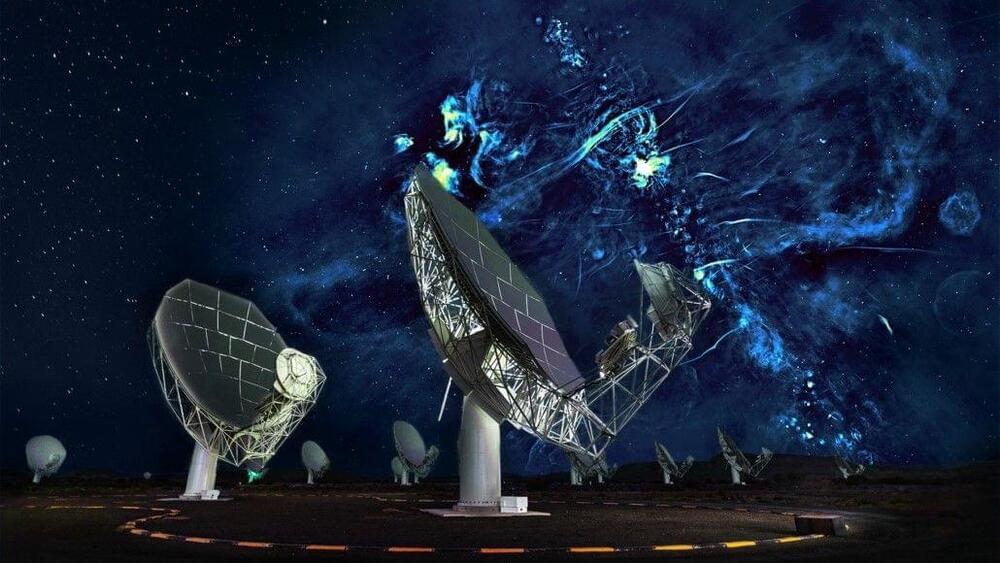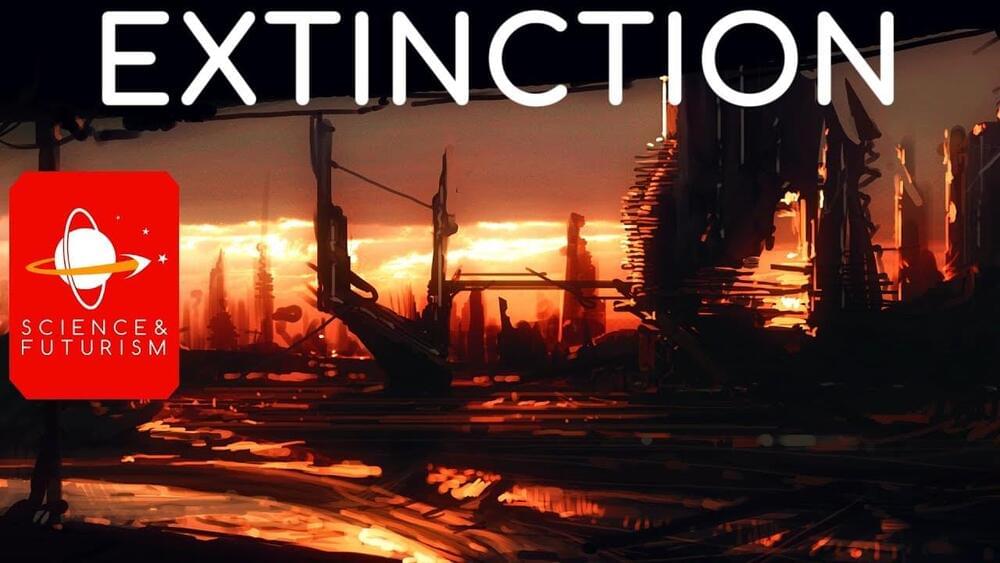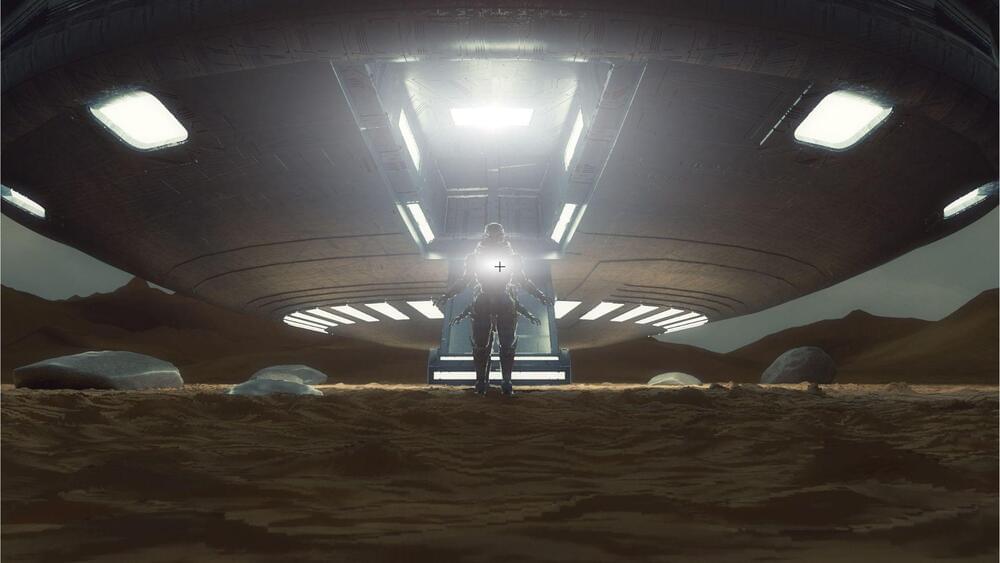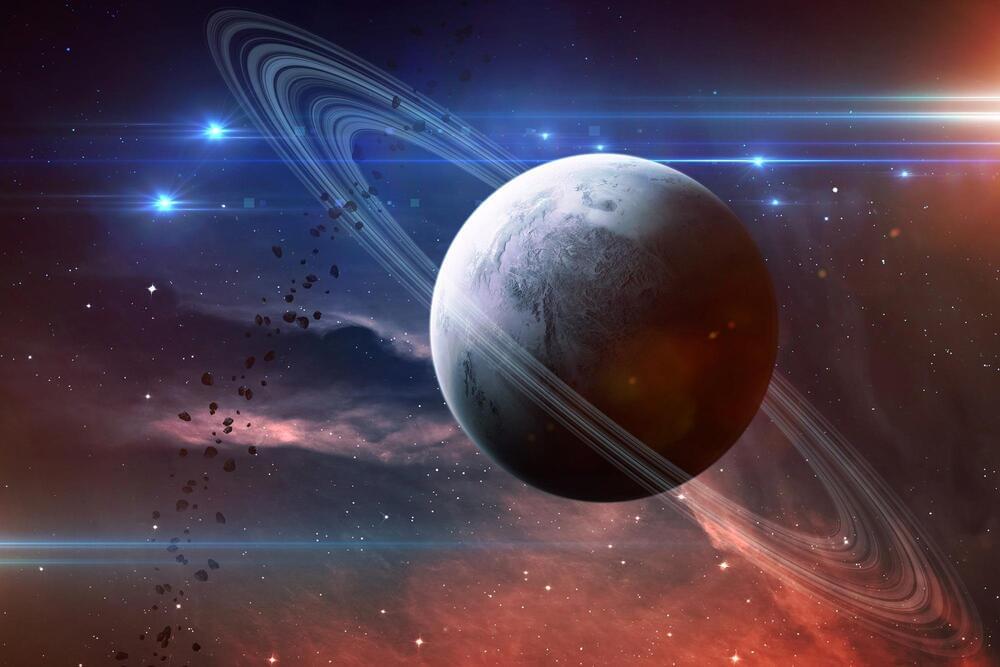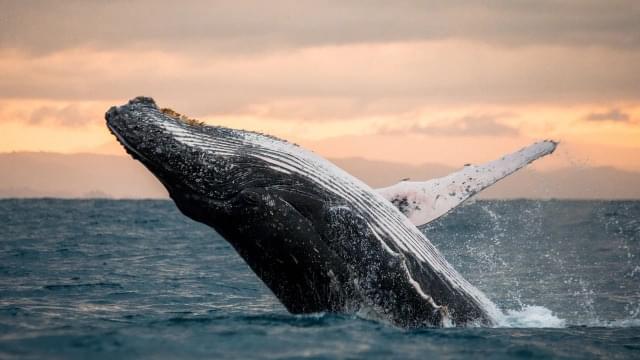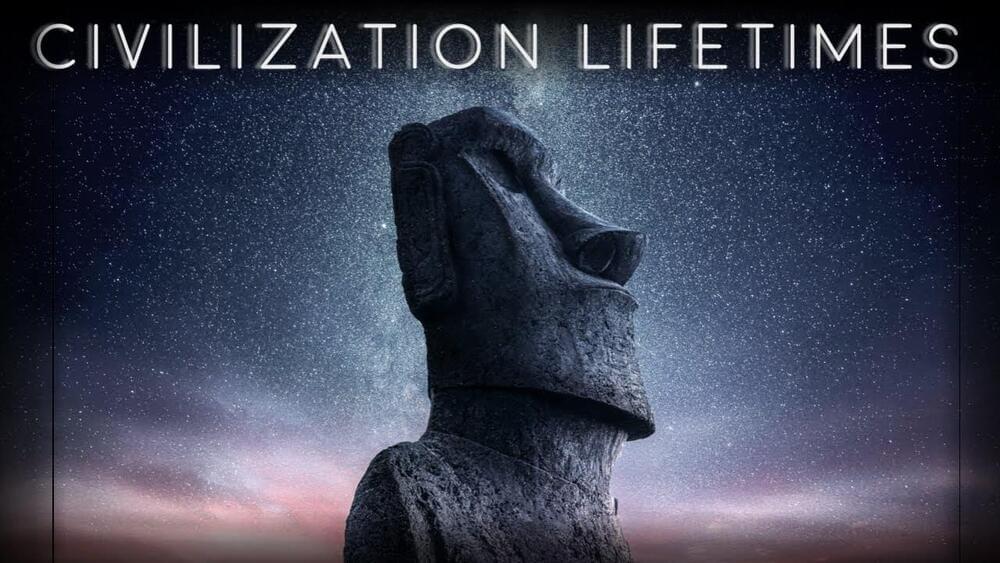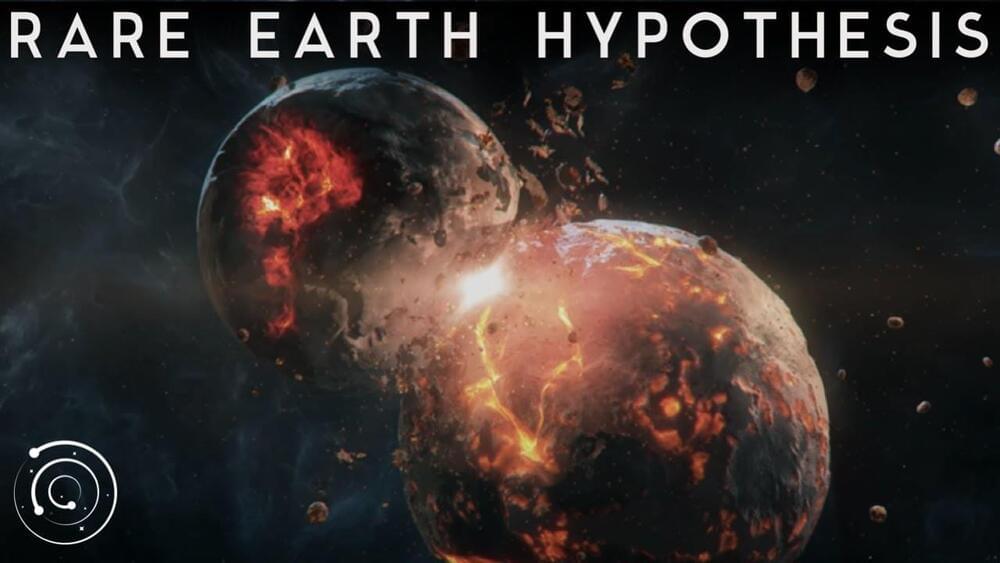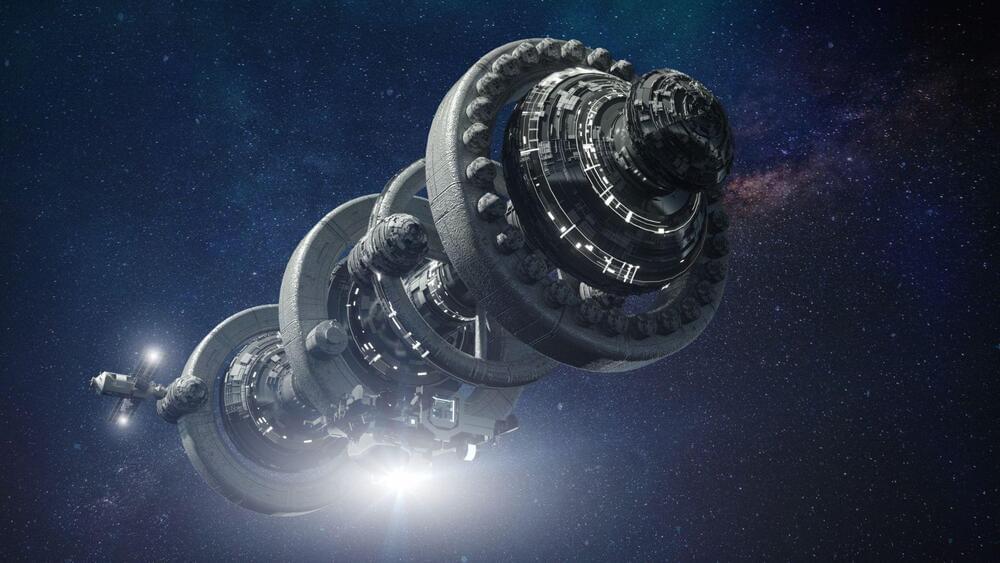Researchers from MIT want to use a massive, powerfull laser, shoot it into outer space in an attempt to attract aliens to Earth.
Category: alien life – Page 51
Astronomers searching for radio signals that could be signs of extraterrestrial life have just gained access to South Africa’s MeerKAT telescope.
Start listening with a 30-day Audible trial and your first audiobook plus two Audible Originals are free. Visit.
http://www.audible.com/isaac or text “ISAAC” to 500–500.
The Fermi Paradox ask us how in a Universe so vast and ancient we seem to be the only intelligent civilization around, with no older interstellar alien empires visible in the galaxy. But could extinction play a role in that, or might extinction events instead drive evolution forward?
Visit our Website: http://www.isaacarthur.net.
Support us on Patreon: https://www.patreon.com/IsaacArthur.
SFIA Merchandise available: https://www.signil.com/sfia/
Social Media:
Facebook Group: https://www.facebook.com/groups/1583992725237264/
Reddit: https://www.reddit.com/r/IsaacArthur/
Twitter: https://twitter.com/Isaac_A_Arthur on Twitter and RT our future content.
SFIA Discord Server: https://discord.gg/53GAShE
Listen or Download the audio of this episode from Soundcloud: Episode’s Audio-only version: https://soundcloud.com/isaac-arthur-148927746/the-fermi-paradox-extinction.
There are likely many exciting alien worlds for extraterrestrials to visit.
Now that more and more scientists are actively searching for signs of extraterrestrial life, whether in our solar system or in the far reaches of space, more attention has been brought to the Fermi paradox.
A new study in preprint server arXiv suggests that we might not have encountered intelligent extraterrestrials because they may not find humanity very interesting.
Mik38/iStock.
According to a recent paper by a math professor at the University of Arkansas, the existence of life on Earth provides proof that abiogenesis is relatively easy on planets similar to Earth, refuting the “Carter argument” conclusion.
Does the presence of life on Earth provide any insight into the likelihood that abiogenesis—the process by which life first emerges from inorganic substances—occurs elsewhere? That is a question that has baffled scientists for a while, as well as everyone else inclined to think about it.
What dead whales can teach us about finding aliens.
Posted on Big Think, direct link at.
Posted on BigThink.
Are alien civilizations likely to be younger or older than us in age? A basic question that seems insurmountable until we start detecting them. But even before that, we can use some logical deduction using lifetime distribution statistics to determine the most plausible answer to this question. Join us today for an explanation of our new research paper on this topic.
You can now support our research program and the Cool Worlds Lab at Columbia University: https://www.coolworldslab.com/support.
Get Stash here! https://teespring.com/stores/cool-worlds-store.
Thank-you to Kevin Clark, Tom Widdowson, Denny Smith, Stephanie Hackley, Mark Sloan, Laura Sanborn, Kolos Kantor, Patrick Herman, Abel Aganbegyan, Claudio Bottaccini, Daniel Brunk, Douglas Daughaday, Scott Fincher, James Kindred, Andrew Jones, Jason Allen, Steven Baldwin, Jason Black, Stuart Brownlee, Shivam Chaturvedi, David Denholm, Tim Dorais, Glen Downton, Eneko Xabier, Elizondo Urrestarazu, Gordon Fulton, Sean Griffiths, Peter Halloran, John Jurcevic, Niklas Kildal, Jack Kobernick, Wes Kobernick, Valeri Kremer, Marc Lijoi, Sheri Loftin, Branden Loizides, Anatoliy Maslyanchuk, Blair Matson, Ocean Mcintyre, Laini Mitchell, Jeffrey Needle, André Pelletier, Juan Rivillas, Bret Robinson, Zenith Star, Lauren Steely, Ernest Stefan-Matyus, Mark Steven, Elena West, Barrett York, Tristan Zajonc, Preetumsingh Gowd, Shaun Kelsey, Chuck Wolfred, David Vennel, Emre Dessoi, Fahid Naeem, Francisco Rebolledo, Hauke Laging, James Falls, Jon Adams, Michael Gremillion, Pierce Rutherford, Trev Kline, Tristan Leger, Lasse Skov, Takashi Hanai, Drew Roberts, Erynn Wilson, Ian Baskerville, Jacob Bassnett, John Shackleford, Marcus Undin, Martin Kroebel, Ian Johnstone, Geoff Suter, Ian Hopcraft, James Valdes, Phil Akrill-Misso, William Robertson, Elizabeth Orman & Giles Ingham.
The Odds of Life and Intelligence
Posted in alien life, evolution
If we re-ran Earth’s clock, would life arise again? Would another civilization eventually evolve? Astrobiology is faced with trying to contextualize our place in the Universe using just a single data point. But even a single data point contains information. The key to unlocking it is a careful understanding of the selection biases at play and intricacies of Bayesian statistics. Today, we’re thrilled to present to you our explainer video of a new research paper led by Prof David Kipping that provides a direct quantification of the odds of life and intelligence on Earth-like worlds, based on our own chronology. Presented & Written by Prof. David Kipping.
This video is based on research conducted at the Cool Worlds Lab at Columbia University, New York. You can now support our research program directly here: https://www.coolworldslab.com/support.
Previous episodes to catch up on:
► “Watching the End of the World”: https://youtu.be/p9e8qNNe3L0
► “Why We Could Be Alone”: https://youtu.be/PqEmYU8Y_rI
References:
► Kipping, D. 2020, “An Objective Bayesian Analysis of Life’s Early Start and Our Late Arrival”, PNAS: https://www.pnas.org/content/early/2020/05/12/1921655117
► Spiegel, D. & Turner, E., 2011, “Bayesian analysis of the astrobiological implications of life’s early emergence on Earth”, PNAS 109,395 https://arxiv.org/abs/1107.3835
► Carter, B. 2007, “Five or six step scenario for evolution?”, Int. J. Astrobiology 7,177 : https://arxiv.org/abs/0711.1985
► O’Malley-James, J. et al. 2013, “Swansong biospheres: refuges for life and novel microbial biospheres on terrestrial planets near the end of their habitable lifetimes” Int. J. Astrobiology 12, 99: https://arxiv.org/abs/1210.5721
► Bell, E. et al., 2015, “Potentially biogenic carbon preserved in a 4.1 billion-year-old zircon”, PNAS 112, 14518: https://www.pnas.org/content/112/47/14518
► Smith, H. & Szathmáry, E. 1995, “The Major Transitions in Evolution”, Oxford, England: Oxford University Press.
► Schopf, W. et al., 2018, “SIMS analyses of the oldest known assemblage of microfossils document their taxon-correlated carbon isotope compositions”, PNAS 115, 53: https://www.pnas.org/content/115/1/53
Video materials & graphics used:
The Rare Earth Hypothesis suggests that our planet may the product of an incredibly improbable sequence of events, and thus perhaps intelligent life is extremely rare in the cosmos. Here we tackle this highly influential idea and the arguments behind it. But, digging deeper, we’ll uncover some problems with the Rare Earth idea — some of which strike to the very core of our scientific quest.
Written & presented by Prof David Kipping.
→ Support our research program: https://www.coolworldslab.com/support.
→ Get Stash here! https://teespring.com/stores/cool-worlds-store.
THANK-YOU to our supporters D. Smith, M. Sloan, L. Sanborn, C. Bottaccini, D. Daughaday, A. Jones, S. Brownlee, G. Fulton, N. Kildal, M. Lijoi, Z. Star, E. West, T. Zanjonc, C. Wolfred, F. Rebolledo, L. Skov, E. Wilson, A. de Vaal, M. Elliott, B. Daniluk, M. Forbes, S. Vystoropskyi, S. Lee, Z. Danielson, C. Fitzgerald, V. Alexandrov, L. Macchia, C. Souter, M. Gillette, T. Jeffcoat, H. Jensen, F. Linker, J. Rockett, N. Fredrickson, B. Mlazgar, D. Holland, J. Alexander, E. Hanway, J. Molnar, D. Murphree, S. Hannum, T. Donkin, K. Myers, A. Schoen, K. Dabrowski, J. Black, R. Ramezankhani, J. Armstrong, K. Weber, S. Marks, L. Robinson, F. van Exter, S. Roulier, B. Smith, P. Masterson, R. Sievers, G. Canterbury, J. Kill, J. Cassese, J. Kruger, S. Way, P. Finch, S. Applegate, L. Watson, T. Wheeler, E. Zahnle, N. Gebben, B. Weaver, C. Macdonald, M. Hedlund, P. Kaup, D. Osborn, D. Gustafson, M. Hedlund, N. Laugman, P. Kaup, T. Lindén, T. Brenard & I. Banks.
“I wouldn’t want to be on the team figuring out how to build a Jupiter-sized spacecraft, but the odds aren’t zero.”
A team of scientists believes we may be able to detect alien spacecraft flying through distant solar systems using the Laser Interferometer Gravitational-Wave Observatory (LIGO) in the US.
Though the scientists from Applied Physics, a research institute in New York, concede that gravitational wave (GW) detection is “in its infancy”, they also say it is “a sophisticated science” that could be used to “detect extra-terrestrial mega-technology,” in a paper available in pre-print server arXiv.
